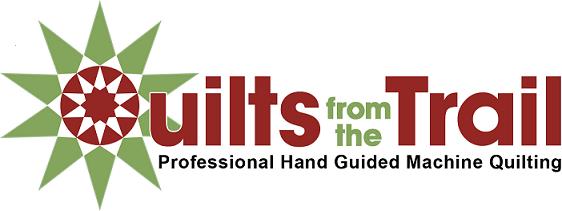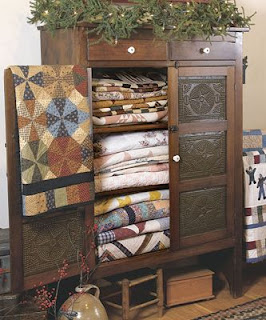We spend so much time choosing
the perfect, quality fabrics for our
quilt tops; but when it comes to the backing we don’t make such careful
decisions. Some quilters will purchase
inexpensive, low quality fabrics for the backings thinking, “It’s just the back
… it’s no big deal!” However, you need
to keep in mind that the inexpensive fabric is not necessarily the same quality
as the more expensive, quilt shop fabric.
You want a quality, strong fabric that will add years of wear to your
finished quilt.
You’ll also want to consider the
following when choosing your backing:
Fiber Content
- 100% cotton is most often preferred choice
- Use the same fiber as what was used in the top
so your fabrics will wear evenly.
- Stretchy fabrics (i.e., Minkee or fleece) work
well for a backing; however, using these fabrics could increase the chances of
tucks and puckering during quilting
Print or Solid?
Prints:
- Pro: Print fabrics will hide any “starts and
stops” (backstitching) or heavy thread play in the quilting
- Pro: If
you have multiple thread colors being used in the top and you don’t want to see
them on the back, a print fabric will camouflage the color changes.
- Con:
Quilting will not be as noticeable
Solids:
- Pro: Solid fabrics will “showcase” the quilting
and make your quilt “reversible”
- Con:
Unlike a print fabric, the solid will show every “start and stop”
(backstitching) or heavy thread play in the quilting.
- Con: If you have multiple thread colors being
used in the top, the color changes on the back may not be as attractive.
Calculating Yardage:
Calculating the amount of yardage
needed for your backing can be overwhelming.
Your backing needs to be at a minimum 6-8” larger than your quilt
top. For example, if your quilt top
measures 50” x 60”, your backing needs to be at least 58” x 68”. Using these numbers, we can now determine the
yardage needed.
Option 1 – Extra Wide Backing
(108” wide)
An extra wide backing would not
need to be seamed. You would purchase
your yardage based on the width of your fabric, so you would only need 58” (or about 1 1/3 yards of fabric).
Option 2 – Seaming Your
Backing (42/44” wide)
When seaming your backing, you
need to determine which direction you want your seam to run – horizontally (the
width of your quilt) or vertically (the length of your quilt). Because of how the backing is loaded onto
the rollers of the quilt frame, some pantograph patterns will only work on
backings that have been seamed horizontally.
Pantograph patterns which work best with horizontally seamed backs will
have a notation stating such.
Once you’ve established how you want
your seam(s) to run on your backing, you need to determine yardage. For our example, I am going to seam my
backing horizontally and the fabric I have chosen is about 40” wide. In order to have enough fabric for the 68” in
length, I’ll need two strips of fabric that are 58” x 40”. So, 2 x 58” = 116” or 3 ¼ yards of fabric.
When seaming your backing, it is
really important to remove the selvages before you stitch your seam. The selvage edges are woven tighter than the
rest of the fabric and can cause puckering in your backing. I also recommend using a ½” seam.
Seam placement is also something
you need to take into consideration.
Most quilters will take their backing yardage, cut it into two or three
equal lengths and widths and sew the seams together. You don’t want to center your seams to the
quilt top, as your seams are going to be the weakest point on your
backing. When folding your quilt, you
don’t want any of your seams to end up on a fold as the constant folding and
unfolding can cause stress on those seams and end up breaking the threads.
So rather than seaming your
backing with your seam going across the center…
…consider seaming your backing
dividing “B” in half and sewing the two pieces on either side of “A”
Your backing will still be the width
and length you need but the seams are now located where they are less likely to
be on a fold line.
If at all possible, you want to
avoid backings that are pieced like this . . .
You want to try to keep all of
your seams going in the same direction.
The backing is attached to the leaders on the take up rollers so that
the seams run parallel to the rollers.
As
the backing is rolled up, the seam will have more tension on it than the sides,
causing the sides of the backing to sag.
The vertical seam in the example above could cause potential tucks or
pleats in the quilting.
Once you have seamed your
backing, press your seams well. You can
press the seam open or to one side. Be
sure to press your backing to remove any set-in creases as well. Fold carefully to minimize wrinkling.
If you have any questions about
backings, please feel free to contact me with any questions.
One last tip about backings … if
you have a quilt that has long straight strips in the body of the quilt, consider
seaming your backing in the same direction as the strips. This will allow the quilt top to be mounted
in a way so that the strips on the quilt top can be quilted in a single pass
without multiple stops and starts.
Happy Quilting,
Patti














































